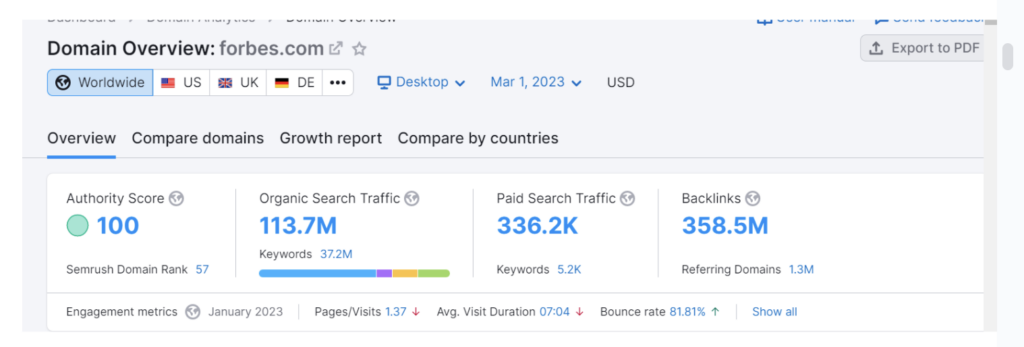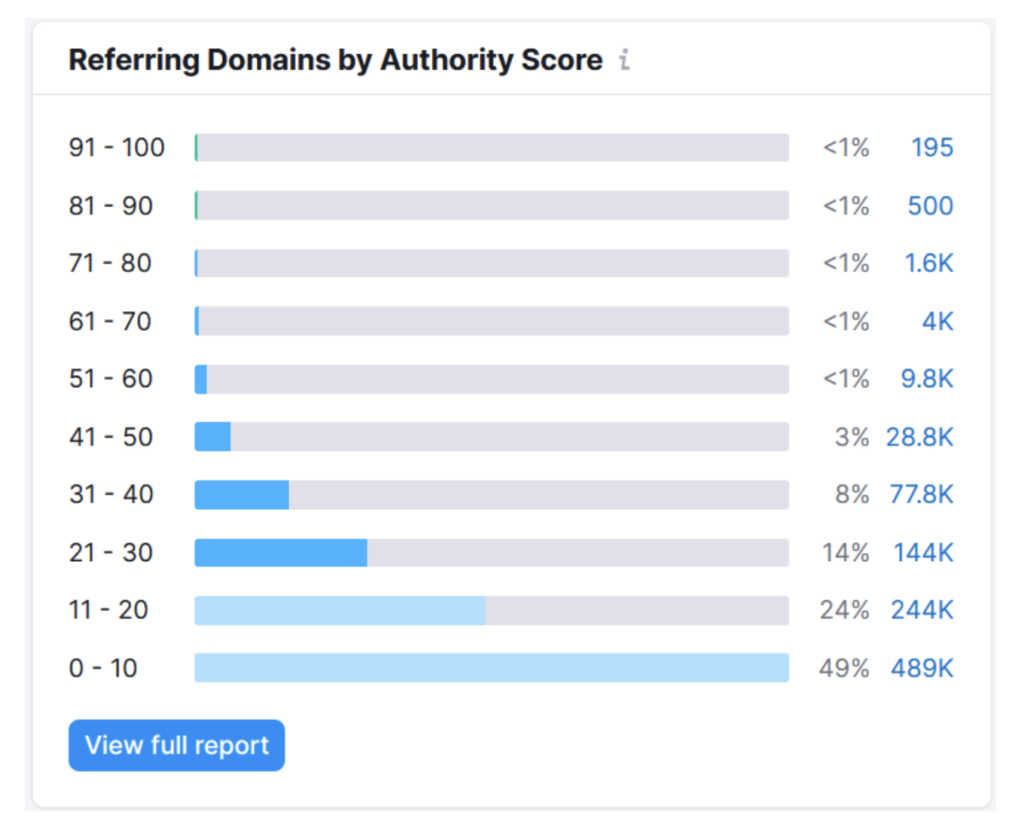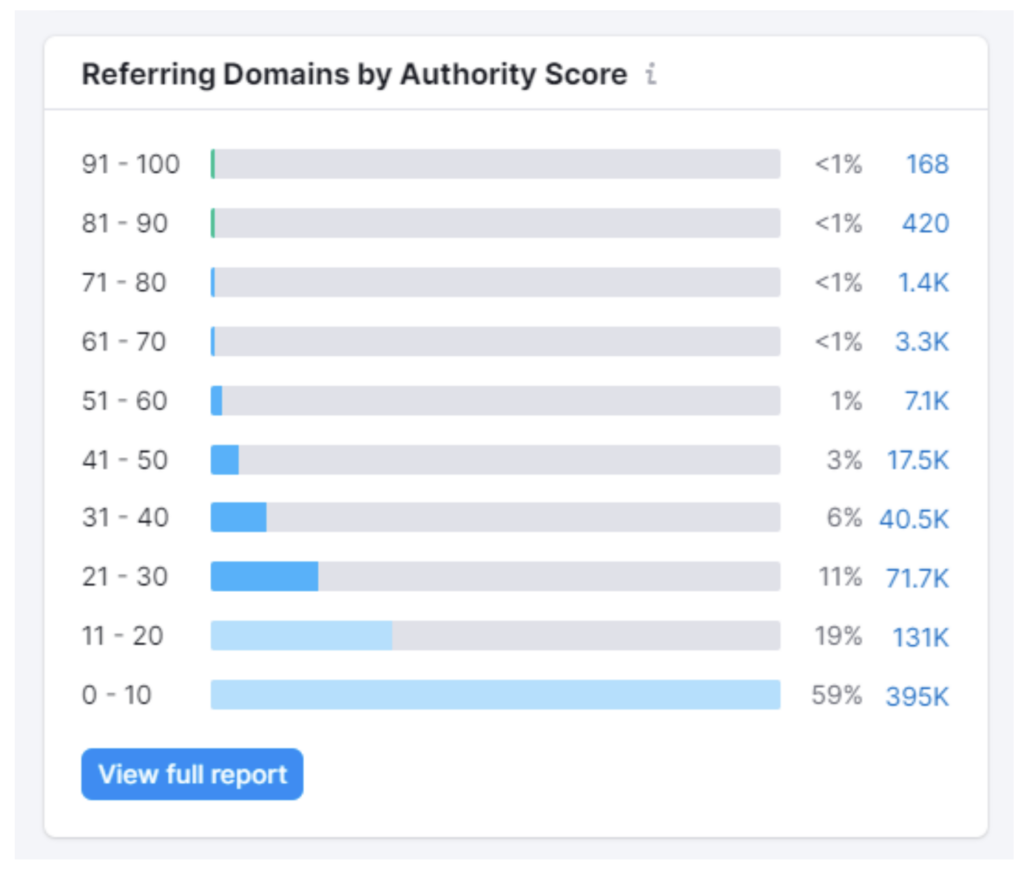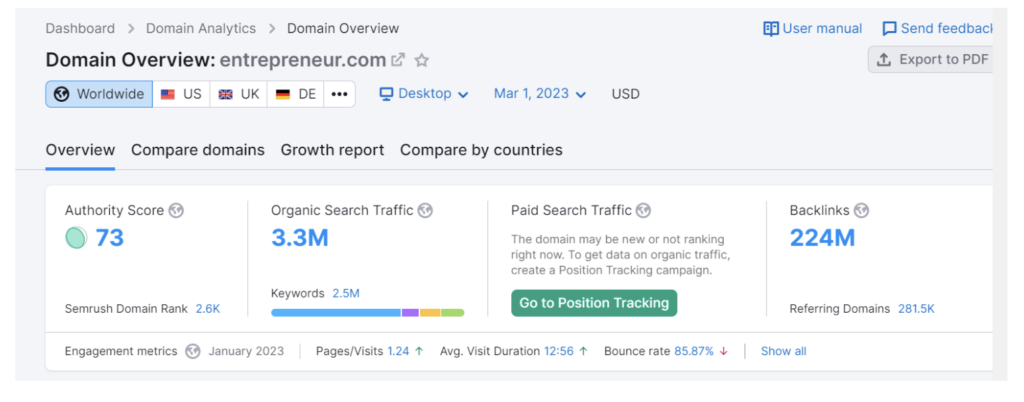According to one study, the top result in Google's organic search has an average click-through rate (CTR) of 27.6%. Therefore, it is crucial for businesses and website owners to improve their search engine rankings. A proven ranking factor is a strong backlink strategy.
While there are many ways to acquire backlinks for your website, many SEO sites suggest building a backlink pyramid. This tiered backlink strategy is said to help improve your domain authority and get more organic traffic.
A cautionary tale from the industry: "An outsourcing company promised a 'pyramid backlink' service. The website's ranking plummeted, and their customer service vanished."
But does it really work? Can a backlink pyramid truly boost your SEO?
In this article, we'll help you answer these questions and more. To get a better understanding of how a backlink pyramid can affect your SEO, we will look at different statistics and analyze real-life case studies. But first, let's refresh our knowledge of backlinks.
The Role of Backlinks in SEO
In essence, backlinks are like "votes of confidence" for search engines. The more backlinks you get from trusted websites, the more trustworthy your website appears to search engine algorithms. As a result, your content will be prioritized in search engine results.
While many might tell you that backlinks are not as important as they used to be, they are still one of the few confirmed Google ranking factors. This means that it is still an important element in SEO.
In fact, a study by Ahrefs has shown that the more backlinks a page has, the more organic traffic it gets from Google. Most SEO professionals also agree that it is nearly impossible to rank on the first page of Google without any backlinks.
What is a Backlink Pyramid?
A backlink pyramid is a backlink strategy that divides links into three different tiers based on their importance and the "link juice" they pass to your website.
Tier 1 links consist of inbound links that point directly to your website. Pages that link to these direct inbound links are considered Tier 2 links. And Tier 3 links are domains that link to your Tier 2 links. In short, a backlink pyramid is about creating backlinks for your backlinks.
In most cases, there are fewer Tier 1 links than Tier 2 links, and there are often more Tier 2 links than Tier 3 links. If you visualize it, you will get a pyramid-like structure like this:

Since Tier 1 links link directly to your website, they should be your top priority. That is why they are at the top of the pyramid.
But if Tier 2 and Tier 3 backlinks don't link directly to your website, why should you still care about them? Do they still affect your SEO?
In SEO, there is a concept more commonly known as "link juice." Under this concept, a domain that links to your website passes on some of its authority to your website.
Tier 3 backlinks pass some of their link juice to your Tier 2 links, improving their domain authority. In turn, your Tier 2 links pass some of their link juice to your Tier 1 backlinks. And finally, your Tier 1 backlinks (direct inbound links) will pass that link juice to your website, making it more authoritative.
Therefore, the more Tier 2 and Tier 3 backlinks you have, the more link juice is passed on to your Tier 1 backlinks and your website. This is why your Tier 1 backlinks should be from high-authority websites, as they tend to have more backlinks already, making your job a lot easier.
How Each Tier Works
Tier 3
The main goal of Tier 3 backlinks is to strengthen your Tier 2 links. Since this does not directly affect your website, the quality of these links is not as important. Therefore, Tier 3 backlinks often include:
- Forum backlinks
- Low-quality directory links
- Blog comment links
- Web 2.0 backlinks
- Private Blog Network (PBN) links
Since the domain quality in this tier is not important, it is very easy to acquire them. That is why they tend to be the most numerous of all three tiers.
Tier 2
While Tier 2 backlinks do not directly affect your website, they still affect the authority of your direct inbound links. Therefore, at this point, domain quality will matter. That said, Tier 2 backlinks often include:
- Social media backlinks
- Press release links
- High-quality directory links
- High-quality Web 2.0 backlinks
- Social media profile links
Tier 1
At the top, we have the Tier 1 links. These are domains that link directly to your website and pass the most link juice. Therefore, their quality and domain authority are crucial. This tier usually consists of:
- Guest post links on high-authority websites
- Citation links
- Resource page links
- Editorial links from high-quality websites
- Links from government websites
- Links from .edu websites
Since most high-authority websites have strict content quality standards, it can be difficult to get a backlink from them. In most cases, you will need to publish an original study or groundbreaking information to get a single citation or editorial link from these websites.
Manageo's traffic comes mostly from organic search. This traffic is mainly based on long-tail searches, requiring optimization for millions of keywords at the same time. Crawl budget quickly becomes an issue.
How Effective is a Backlink Pyramid?
Opinions on backlink pyramids vary greatly. Supporters argue that the strategy is still effective. On the other hand, critics believe the strategy is not entirely legitimate as it can manipulate the entire backlink-building process.
A cautionary tale from the trenches: A site owner spent thousands on a "three-tier backlink" package. Traffic spiked for two months. On the third month, after a Google algorithm update, the site was de-indexed. Appeals went nowhere.
To settle this debate once and for all, let's look at what Google and the actual data have to say.
What Google Says
In an interview, Google's John Mueller stated that the total number of backlinks to your site does not matter. Instead, SEOs should focus on quality, adding:
"We try to understand what is relevant for a website, how should we weigh these individual links, and the total number of links doesn’t matter at all. Because you could go off and create millions of links across millions of websites if you wanted to, and we could just ignore them all.
Or there could be one really good link from one website out to your website that is for us a really important signal that we should treat this website as relevant because it has that one link. I don’t know, maybe from the home page of a big news site, for example. So the total number is basically completely irrelevant."
What he says is consistent with the principle behind the backlink pyramid, as the strategy prioritizes quality over quantity for Tier 1 backlinks.
That being said, the backlink pyramid strategy still seems to work well as long as the combination of all backlinks makes sense to Google.
However, if the backlinks in your backlink pyramid strategy are irrelevant, they could affect your site's ranking.
In his statement, Mueller also said that the backlink profile will also be a key ranking factor in the future, so it is beneficial to have a strong backlink strategy, at least at this point.
"To some extent, links will always be something that we care about because we have to find pages somehow. It’s like how do you find a page on the web without some reference to it?"
However, in a live Q&A session, Mueller also had this to say about the importance of links in the future:
"But my guess is that over time, it won’t be such a big factor as it is today. I think already that’s something that’s been changing quite a bit."
Analyzing Real-Life Case Studies
In theory, a backlink pyramid is a great way to improve your organic traffic. But does it work in real life?
To answer this question, we will analyze the backlink profiles of some of the biggest websites today. Note that no single metric can measure a website's backlink pyramid. However, if a website has high-authority Tier 1 domains pointing to it, it is safe to assume that such Tier 1 links have a large number of Tier 2 and Tier 3 backlinks.
Therefore, in this section, we will focus on the quality of each website's backlinks rather than the quantity.
1. Forbes.com
Let's start with Forbes.com, a popular PR site. At the time of writing, the site has the following SEO data:
- Organic Traffic: 113.7 million
- Total Backlinks: 358.5 million
- SEMrush Authority Score: 100

Now, let's see how these 358.5 million backlinks are distributed.

From the screenshot above, we can conclude that:
- There are about 195 backlinks from websites with a domain authority of 91 to 100.
- 500 are from websites with a domain authority of 81 to 90.
- Further down the spectrum, we see that there are 489,000 backlinks from websites with a domain authority of 0 - 1.
With these statistics, it is clear that Forbes.com has more high-quality backlinks than most websites. To put this into perspective, most websites would be lucky to get even a single backlink from a website with an authority score of 91 - 100.
One of the high-authority websites linking to Forbes is msn.com. If you check this website's backlinks, you will see that it also has many high-authority backlinks, which would count as Tier 2 backlinks for Forbes.

2. Techradar.com
- Organic Traffic: 13.7 million
- Total Backlinks: 219.5 million
- SEMrush Authority Score: 82

Backlink Analysis
- There are 101 backlinks from websites with a domain authority of 90 - 100.
- 315 are from websites with a domain authority of 81 - 90.
- 702,000 are from websites with a domain authority of 0 - 10.
Like Forbes, Techradar.com also has many high-quality backlinks. Therefore, it is also safe to assume that it has many high-quality Tier 2 and Tier 3 backlinks as well.
3. Entrepreneur.com
For our third example, we chose Entrepreneur.com, a website that focuses on finance and making money.
- Organic Traffic: 3.3 million.
- Total Backlinks: 224 million
- SEMrush Domain Authority Score: 73

Based on the screenshot above, the site's backlinks are distributed as follows:
- There are 117 backlinks from websites with a domain authority of 90 - 100.
- 300 are from websites with a domain authority of 81 - 90.
- 131,000 are from websites with a domain authority of 0 - 10.
From the data above, we can deduce that the backlink pyramid strategy also works for Entrepreneur.com.
In summary, we can conclude that the backlink pyramid strategy does help with SEO. However, there are many other factors that can affect your organic search traffic. Therefore, you should use it in combination with other SEO strategies to ensure a better search ranking.
Ready to Take Your Backlink Strategy to the Next Level?
Considering the complexity of how a backlink pyramid works, it is understandable why there is so much debate about its effectiveness.
While we can all agree that backlinks play a key role in SEO and search engine rankings, it is difficult to determine the exact impact of a backlink pyramid on SEO.
From the discussion above, building multi-tiered links can help improve a website's visibility and search engine rankings. However, if not executed properly, this method can do more harm than good. Therefore, it is important to do thorough research and explore various options before implementing a backlink pyramid strategy.
In addition, as Google's algorithm continues to evolve over time to make more accurate calculations for website rankings, the effectiveness of the backlink pyramid may change — so keep that in mind.
The prevailing view in the SEO community: Backlink pyramids are not completely useless, but they are extremely risky. They are suitable for large sites with resources and experience, but small and medium-sized site owners should use them with caution. Instead of studying "pyramids," it is better to focus on content, users, and brand building.
Now that you have read all about backlink pyramids and SEO, are you ready to take your backlink strategy to the next level?
Conclusion: Backlinks Aren't a Silver Bullet; Content and Users are King
The backlink pyramid is often seen as "snake oil" in the SEO community and is not a long-term solution. What truly improves rankings is high-quality content, user reputation, and brand influence. Stop believing in backlink packages and focus on creating solid content—that's the right path.
One last question: What backlink mistakes have you made? Share your war stories in the comments!